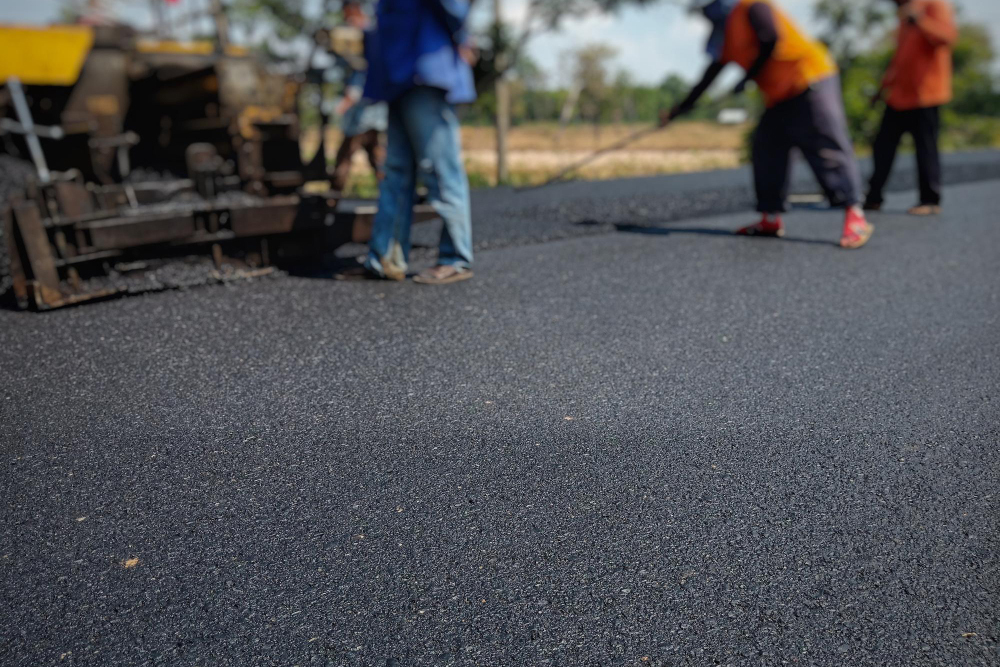
Asphalt surfaces face constant threats from weather, traffic, and time. Without proper protection, your driveway, parking lot, or roadway can deteriorate rapidly, leading to costly repairs or complete replacement. Sealcoating offers a proven solution to extend the life of your asphalt investment.
This protective coating acts as a barrier against the elements while enhancing your property's appearance. Understanding why sealcoating matters can help you make informed decisions about maintaining your asphalt surfaces and avoiding expensive damage down the road.
Sealcoating involves applying a protective liquid coating over existing asphalt surfaces. This coating typically contains coal tar, asphalt emulsion, water, and various additives that create a durable barrier.
The process fills small cracks and creates a smooth, uniform surface that resists water penetration, UV damage, and chemical spills. When properly applied, sealcoating penetrates slightly into the asphalt surface while forming a protective layer on top.
Professional contractors use specialized equipment to ensure even application and proper curing. The coating needs adequate time to dry and bond with the underlying asphalt, typically requiring 24-48 hours depending on weather conditions.
Florida's climate presents unique challenges for asphalt surfaces. Intense UV rays break down asphalt binders, causing the surface to become brittle and crack. Heavy rainfall can penetrate these cracks, weakening the foundation and creating potholes.
Sealcoating reflects sunlight and repels water, significantly reducing weather-related deterioration. This protection is particularly valuable in areas like Sanford, where seasonal storms and year-round sun exposure can quickly damage unprotected asphalt.
Fresh sealcoating transforms weathered, gray asphalt into a rich, dark surface that looks newly installed. This dramatic improvement enhances your property's appearance and can increase its value.
The smooth, uniform finish also makes cleaning easier by preventing dirt and debris from settling into surface irregularities. Regular sealcoating keeps your asphalt looking professional and well-maintained.
Preventive maintenance through sealcoating costs significantly less than major repairs or replacement. A properly maintained asphalt surface can last 20-30 years, while neglected surfaces may require replacement in just 10-15 years.
The relatively small investment in regular sealcoating every 2-3 years prevents much larger expenses later. This proactive approach saves money while maintaining safe, functional surfaces.
Small cracks in asphalt surfaces indicate that the binding agents are breaking down. These hairline fractures allow water to penetrate, leading to more extensive damage during freeze-thaw cycles or heavy storms.
Addressing surface cracking with sealcoating prevents minor issues from becoming major problems. Once cracks exceed a quarter-inch in width, they typically require crack sealing before sealcoating application.
Fresh asphalt appears deep black, but exposure to UV rays gradually turns it gray. This color change signals that oxidation is breaking down the surface oils and binders that hold the asphalt together.
Faded asphalt becomes increasingly porous and vulnerable to damage. Sealcoating restores the protective qualities and appearance while preventing further oxidation.
Automotive fluids, gasoline, and other chemicals can soften asphalt and create permanent stains. These substances break down the asphalt binders, creating weak spots that deteriorate rapidly under traffic.
Sealcoating provides chemical resistance that helps prevent these damaging substances from penetrating the asphalt surface. Existing stains should be treated before sealcoating application for best results.
Professional sealcoating begins with thorough surface preparation. This includes cleaning debris, removing vegetation, and filling cracks larger than a quarter-inch. Power washing may be necessary to remove stubborn stains or buildup.
Proper preparation ensures good adhesion between the coating and asphalt surface. Shortcuts during this phase can lead to premature coating failure and poor results.
Contractors apply sealcoating using spray equipment or squeegee methods, depending on the surface size and conditions. Multiple thin coats generally provide better results than single thick applications.
Temperature and humidity affect application and curing times. Professional contractors monitor weather conditions to ensure optimal results and proper coating adhesion.
Newly sealed surfaces require protection from traffic and weather during the curing process. Most surfaces can handle foot traffic within 4-6 hours but need 24-48 hours before vehicle use.
Proper curing ensures maximum durability and appearance. Rushing this process can damage the fresh coating and reduce its effectiveness.
Spring and fall typically offer ideal conditions for sealcoating in Florida. Temperatures should be between 50-85°F with low humidity and no rain expected for at least 24 hours after application.
Summer heat can cause coating to dry too quickly, while winter moisture may prevent proper adhesion. Professional contractors understand local weather patterns and can recommend optimal timing.
New asphalt should cure for 90 days to one year before the first sealcoating application. This allows natural oils to evaporate and the surface to stabilize.
Existing surfaces benefit from sealcoating every 2-3 years, depending on traffic levels and environmental exposure. High-traffic areas may require more frequent treatment.
Professional contractors use commercial-grade sealcoating materials and application equipment that provide superior results compared to consumer products. They also have access to crack fillers, primers, and additives that enhance performance.
Proper equipment ensures even coverage and appropriate thickness. Inadequate tools can result in streaking, thin spots, or excessive buildup that reduces durability.
Experienced contractors understand how weather conditions, surface preparation, and application techniques affect results. They can identify and address potential problems before they compromise the coating.
Professional application includes proper safety measures and cleanup, reducing liability and mess for property owners.
Regular sealcoating represents one of the most effective ways to protect and extend asphalt life. This preventive maintenance approach saves money while keeping surfaces safe, functional, and attractive.
The key to success lies in working with experienced professionals who understand local conditions and use quality materials. Proper timing, surface preparation, and application techniques ensure maximum durability and performance.
If you need professional sealcoating in Sanford FL, contact Florida Sealcoating today to get a quote. Protecting your asphalt investment starts with choosing the right contractor and scheduling regular maintenance.